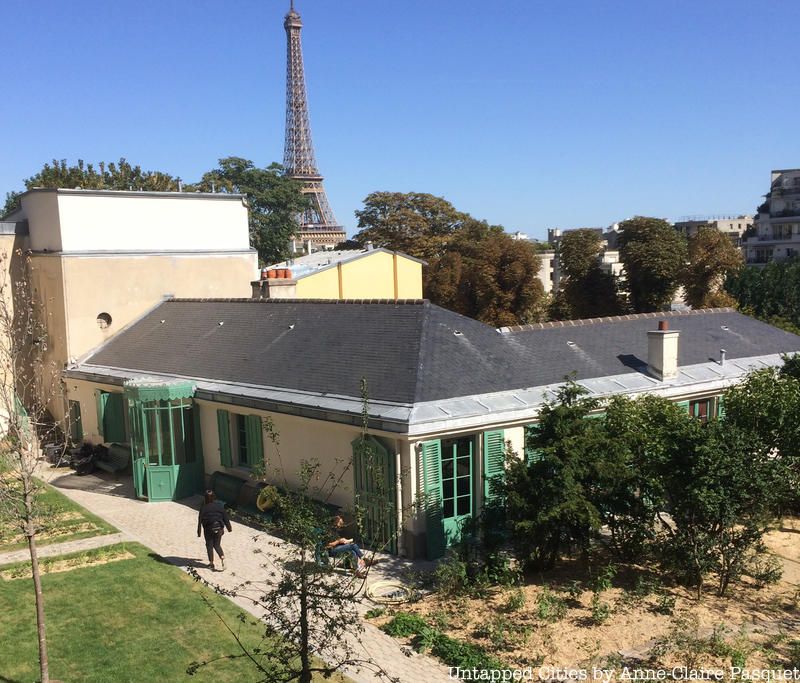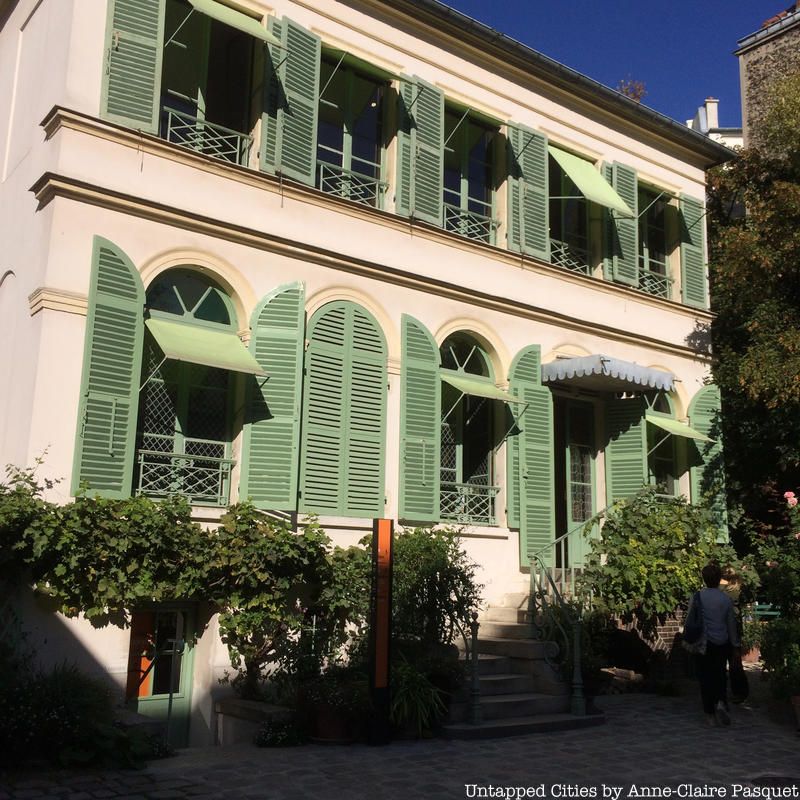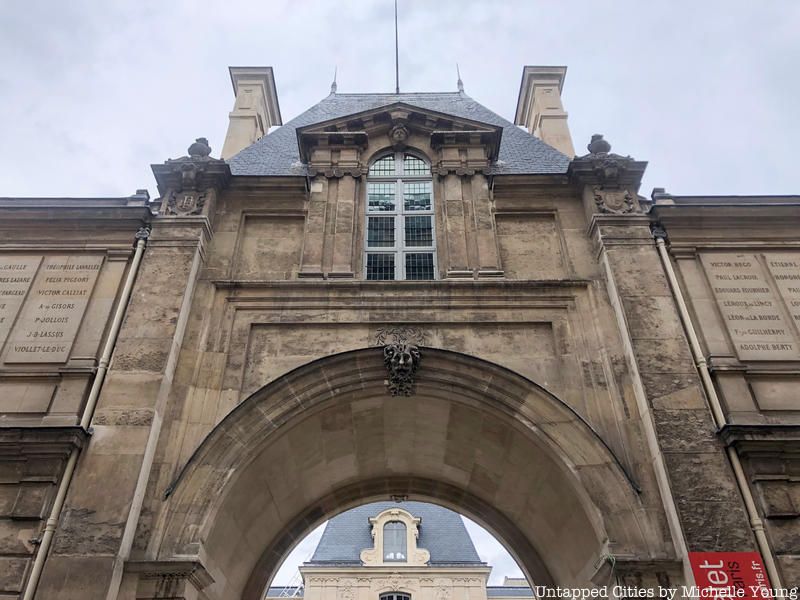After-Hours Tour of the Fraunces Tavern Museum: "Path to Liberty"
Explore a new exhibit inside the oldest building in Manhattan, a witness to history throughout the Revolutionary War Era!


In Paris, we are constantly passing by the former homes and haunts of famous French writers. Part of the city’s magic comes from knowing that the cobblestones beneath our feet once bore the weight of some of the most brilliant and eccentric authors who ever lived. The real treat is when we get to go inside these writers’ homes; it is here that we truly travel back through time, gaining access to their inner worlds and maybe even coming to understand what their lives were really like. In Paris, you can visit the homes-turned-museums of four famous French writers: Honoré de Balzac, Victor Hugo, George Sand and Marcel Proust. Follow the Untapped guide and get to know some of the greatest literary spirits of the past.
1. Maison de Victor Hugo, 6 Place des Vosges
When Les Misérables was first published in 1862, copies of the book sold out within a few hours. Victor Hugo was on vacation at the time, and his publisher sent him a telegram consisting of a single character: “!”. One hundred-fifty years later, the public is still responding to Les Misérables with an exclamation point (the recent film adaption, starring Hugh Jackman and Anne Hathaway, broke the record for the number of advance ticket sales for a movie opening on Christmas day). In Paris, fans can get a Les Mis-fix by visiting the Maison de Victor Hugo, where the author lived from 1832 to 1848. A trip to the Maison is worthwhile, even for those who aren’t so fond of Les Misérables; the museum is free, and it’s located in the Place des Vosges, one of the most beautiful squares in all of Paris. And don’t leave without paying a visit to the Chinese art and artifacts in the Salon Chinois. Hugo designed the room for his mistress, Juliette Drouet, while he was living in exile in Guernsey, when Asian art was all the rage. In addition to collecting Chinese art, Hugo apparently also made a hobby out of carving furniture–with this teeth! It sounds crazy, but we have a reliable source.
2. Maison de Balzac, 47 Rue Raynouard

Tucked away in the 16th arrondissement, about 20 minutes east of the Bois du Boulogne on foot, sits the house where Balzac lived from 1840 to 1847. In 1849, a year before his death, the city of Paris acquired the author’s former residence and preserved it as a literary museum. Now, visitors can poke around the garden and gaze at the desk where Balzac wrote La Comédie humaine, an enormous multi-volume masterpiece containing more than 2,000 characters and spanning over 30 years, for which he became known as the father of realism. For Balzac, writing a work of such magnitude took time, determination and a massive amount of caffeine. On a typical workday, he would rise at 12 a.m and write through the night, pausing only to pour himself yet another cup of tea or coffee. Balzac’s tea kettle—which he nicknamed the “screech-owl”—is on display at the museum.
3. Musée de la Vie Romantique (George Sand), 16 Rue Chaptal)

George Sand is the most famous—perhaps the only famous—female French writer from the 19th century. Even today, the details of Sand’s personal life—her bisexuality, her love affairs, her cross-dressing—receive more attention than her writing does. It’s no wonder that she published her books under a male pseudonym; if she hadn’t, her works may not have been taken seriously at all. The ground floor of the Musée de la Vie Romantique, housed in a former artist’s studio at the foot of Monmartre, is devoted to Sand’s life and work. The museum has collected much of her furniture, personal belongings and original watercolor paintings. The creepiest items on display are the ghostly plaster casts of Sand’s hand and the composer Chopin’s arm which, suspended in their case, look like they belong in a scene from Grey’s Anatomy. Sand and Chopin had a love affair that lasted ten years, and so the arrangement of their plaster hands side by side is a bit ironic. They ended their affair on ugly terms because Sand suspected that Chopin had a crush on her daughter, Solange. In fact, when Chopin was on his deathbed, Solange was the one holding his hand.
4. Musée Carnavalet (Marcel Proust), 23 Rue de Sévigné

One of the highlights of the Musée Carnavalet is the replica of Marcel Proust’s cork-lined bedroom, complete with the bed in which he wrote and edited his seven-volume novel, In Search of Lost Time. It’s amazing—and sad—to think that someone who had such a powerful and lively imagination spent the last three years of his life cooped up in his tiny bedroom, confined to the bed that he owned since childhood. Proust suffered from severe allergies and asthma and, in the days before Allegra and Claritin, the only thing that protected him from the outside world was the layer of cork that lined his walls, designed to keep out the dust and pollen. Proust died before he finished editing the final volumes of his novel but, even in its unpolished form, In Search of Lost Time is widely considered to be one of the greatest works of literature of all time. “It’s Proust who ended the novel,” the American author Andrew Holleran once wrote, “simply by doing something so complete, monumental, perfect, that what the fuck can you do afterwards?” If you want to see the neighborhood where Proust lived, you can walk by his former apartment building at 102 Boulevard Haussmann and take a leisurely stroll through Parc Monceau, the quiet, gated patch of green where Proust took his daily walks.
Also check out our roundup of the Top 5 Museums That Used to Be Artist Studios.
Subscribe to our newsletter